This article needs additional citations for verification .(April 2010) |
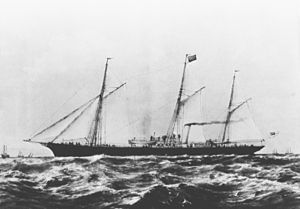
A steam yacht is a class of luxury or commercial yacht with primary or secondary steam propulsion in addition to the sails usually carried by yachts.
This article needs additional citations for verification .(April 2010) |

A steam yacht is a class of luxury or commercial yacht with primary or secondary steam propulsion in addition to the sails usually carried by yachts.
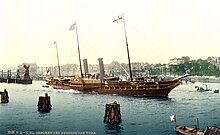

The English steamboat entrepreneur George Dodd (1783–1827) used the term "steam yacht" to describe the steamer Thames, ex Duke of Argyle. Her service on the river had first been advertised on 22 June 1815 as "Thames Steam Yacht", intended to emphasise how luxurious these vessels were. [1] [2]
The first two private steam yachts known were:
Thomas Assheton Smith II was excluded from the Royal Yacht Club for his advocacy of the steam yacht, eight of which he commissioned between 1830 and 1851, beginning with the Menai. [13] [14] In cooperation with the Scottish engineer Robert Napier, whose Govan, Glasgow yard built a number of them, Smith did much to improve the hull design of steam yachts. [15] After 1856, when the Royal Yacht Squadron (the Club became Squadron in 1833) removed their edict, steam yacht building began to multiply. [16]
In England around 1901, some steam-powered fairground swings attempted to recreate the steam yacht experience; one example was built by the fairground equipment engineer Frederick Savage. [17]
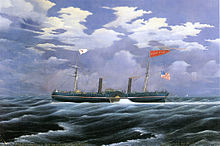

The term "steam yacht" encompasses vessels of several distinct uses, but of similar design.
A luxury yacht in the modern sense is a vessel owned privately and used for pleasure or non-commercial purposes. Steam yachts of this type came to prominence from the 1840s to the early-20th century in Europe. The first British royal yacht was Victoria & Albert of 1843. Nominally the first steam yacht in the United States was Cornelius Vanderbilt's North Star, launched in 1854; however, this was actually a full-size steamship fitted out for the personal use of Vanderbilt and his family, and left no legacy on steam yacht design. [18] The first true steam yachts known to have been built in the United States, Leonard Jerome 's Clara Clarita and R. F. Loper's Wave, were completed in 1864. [18]
Steam yachts were commissioned by wealthy individuals and often heads of state as extravagant symbols of wealth and/or power. [19] They were usually built with similar hull-lines to clipper ships, with an ornate bow structure and a low, smooth freeboard. Main propulsion usually came from one or two steam engines, later of compound type, or in even later, very large yachts, triple expansion or turbines. Steam yachts usually carried rigging for sails, originally as an auxiliary propulsion system, but later more for show and naval tradition. Private steam yachts were capable of long seagoing voyages, but their owners' needs and habits saw most stay near to the coast. Inland seas such as the Baltic and the Mediterranean were popular areas for using steam yachts.
Statistics show that Clydeside was the premier building area for steam yachts in the United Kingdom: 43 shipbuilding yards on Clydeside built 190 steam yachts between 1830 and 1935.[ citation needed ] Scotts Shipbuilding & Engineering Co Ltd of Greenock Scotland built 23 steam yachts between 1876 and 1904. [20]
The auxiliary steam yacht is a class of steam yacht in the luxury category. In 1876-77, British politician Thomas Brassey took his wife and children on a world cruise in their newly built yacht, the 532 ton Sunbeam. Brassey preferred sail as the primary source of motive power, but knew from years of experience the advantages of steam power, when wind and tide made progress difficult. Sunbeam was, therefore, designed as a "steam auxiliary", capable of covering long distances between coaling stations under her fully rigged sail area of 9200 square yards, but with enough fuel to steam for up to 20 days if necessary (she could carry 80 tons of coal). Their trip was made famous by a book written and published by his wife Annie Brassey - A Voyage in the Sunbeam, our Home on the Ocean for Eleven Months. Within a few years other yachts were built for owners with a similar sense of adventure, famously Lancashire Witch for Sir Thomas George Fermor-Hesketh, 7th Baronet and Wanderer for Charles Joseph Lambert. These sailing yachts, with steam auxiliary power, were more expensive to build and run, but gave the owners the freedom to roam the world without necessarily planning their routes via the network of coaling stations in existence at this time. In addition the yacht masters were not totally reliant on the quality of the steaming coal available to them, that could at times be questionable. When not in steam, the funnel on the auxiliary yacht would be lowered and the propeller feathered to reduce drag. [21]
Those of the second class of steam yacht were built for commercial use, but gained the 'yacht' title due to their size and design similarity with the private vessels and because they were not constructed to be mainly cargo- or passenger-carrying vessels, but as versatile, low-draft ships capable of working local coastal routes. This is closer to the original meaning of the word "yacht", coming from the Dutch term Jacht, describing a small, fast commercial vessel. The distinction between a commercial steam yacht and a coastal trading vessel is not a clear one, but the latter term usually implies a mainly cargo-carrying ship. Steam yachts were often run by packet companies operating regular, timetabled services between islands or coastal towns. Steam yachts were widely used in the whaling trade.
The light, fast design of a steam yacht was ideal for chasing whales, and the lack of a large amount of cargo space did not matter as whaling produced few bulky products. Commercial steam yachts were rarely as ornate or luxurious as their private counterparts, with simpler, more rugged lines and usually a more practical sailing rig. Steam yachts used in the whaling trade often had reinforced hulls to allow them to operate amongst the ice of frozen waters.
This meant that several whaling-yachts crossed the definition from commercial to private yacht in later life when they were bought for polar exploration work. Since these expeditions were, by and large, privately funded the ships used became, by definition, private steam yachts and many were registered with the 'SY' prefix used for such craft. The Aurora, Morning, Nimrod, Terra Nova and the Quest are all examples of commercial vessels that went on to become steam yachts used during the Heroic Age of Antarctic Exploration. It was common for expedition leaders to be members of a yacht club, so many of these ships were registered to a civilian club and flew a club burgee (and a blue ensign in the case of British steam yachts). Ernest Shackleton's ship Endurance and Roald Amundsen's Fram are unusual cases of vessels being purpose-built as icebreaking private steam yachts. Endurance was originally built for conducting tourist cruises of the Arctic, bringing her close to the definition of a yacht in the modern sense.
The Royal Navy used small numbers of steam yacht-type vessels from the Victorian era onwards to transport men and equipment in harbour, act as coastal escorts for larger ships and for training and exercises. A good example of this was the iron p.s. Fire Queen built for the entrepreneur Thomas Assheton Smith (II) (1776–1858), (his first of three Fire Queens) by Robert Napier, Govan, Glasgow and launched on 27 July 1844, Napier Yard No 5, engine No 88. [22] She was bought by the British Admiralty in July 1847 for £5,000 for use as a tender; there is an illustration (incorrectly captioned) of her in that role. [23] She was sold on 4 August 1883 for £1,100 by the Admiralty to Castle the shipbreakers. [24] Fire Queen was replaced by the Admiralty by the former Steam yacht Candace, launched on 23 September 1881 by Ramage & Ferguson, Leith, bought by the Admiralty in 1882 and then duly renamed Fire Queen. [24]

In the First World War vessels such as these and several requisitioned private yachts were used on anti-U-boat patrols and for minesweeping. It became clear that the naval trawler was more suited to these kinds of tasks.
Steam yachts often used the ship prefix SY, but some were alternatively described as screw schooner, if they carried schooner rig. A fine example of the screw schooner is the 125 year old British Amazon , built at Southampton in 1885 from designs by the renowned Dixon Kemp and still in use in the USA after crossing the Atlantic in 2009, although diesel-propelled since 1937. She was photographed on Columbus Day 2009 on a mooring near the Herreshoff Marine Museum in Bristol, Rhode Island. [25]
Aurora built by Alexander Stephen & Sons Ltd, Glasgow in 1876 (a former whaling-yacht turned Antarctic exploration vessel) is a notable example of the class, as are the Victorian era yachts used by European monarchs, such as the HMY Victoria and Albert III and the SMY Hohenzollern. One of the oldest steam yachts, and one of the few still surviving today, is the Kheideval Yacht, Mahroussa, which was built in 1865 and was maintained in seaworthy condition by the Egyptian government.
The Hildegarde and Hiawatha were steam yachts chartered by the Ministry of Agriculture, Fisheries and Food (United Kingdom) - Directorate of Fisheries, now known as the Centre for Environment, Fisheries and Aquaculture Science (Cefas) between 1912 and 1914 to carry out fishery investigations. [26] Before the First World War, the SY Hildegarde was renamed as the Managem. On 15 January 1917 she was requisitioned by the Admiralty and armed with a 12 pdr naval gun. Notably she was stationed off Atlit in Israel and used to relay espionage messages from operatives onshore (and briefly used by the Jewish "Nili" espionage group).


A steamship, often referred to as a steamer, is a type of steam-powered vessel, typically ocean-faring and seaworthy, that is propelled by one or more steam engines that typically move (turn) propellers or paddlewheels. The first steamships came into practical usage during the early 1800s; however, there were exceptions that came before. Steamships usually use the prefix designations of "PS" for paddle steamer or "SS" for screw steamer. As paddle steamers became less common, "SS" is incorrectly assumed by many to stand for "steamship". Ships powered by internal combustion engines use a prefix such as "MV" for motor vessel, so it is not correct to use "SS" for most modern vessels.

Thomas Brassey, 1st Earl Brassey, was a British Liberal Party politician, Governor of Victoria and founder of The Naval Annual.

Robert Napier was a Scottish marine engineer known for his contributions to Clyde shipbuilding.

HMS Waterwitch was a British hydrographic survey vessel active in eastern Asian waters from 1894 to 1912. She was a wooden vessel, purchased from a private owner specifically for survey work. She was lost in a collision in Singapore harbour in 1912.

HMS Eclipse was a Royal Navy Cruizer-class brig-sloop built by John King at Dover and launched in 1807. She served off Portugal and then in the Indian Ocean at the capture of the Île de France. Shortly thereafter she captured Tamatave. She was sold for mercantile service in 1815. She traded with India until 1823. Then between 1823 and 1845 she made seven voyages as a whaler.

SS Archimedes was a steamship built in Britain in 1839. She was the world's first steamship to be driven successfully by a screw propeller.

George Lawley & Son was a shipbuilding firm operating in Massachusetts from 1866 to 1945. It began in Scituate, then moved to Boston. After founder George Lawley (1823–1915) retired in 1890, his son, grandson and great-grandson upheld the business, which continued until 1945. Of the hundreds of ships built by the Lawleys, highlights include the yachts Puritan and Mayflower, respective winners of the 1885 and 1886 America's Cup.
St Clare John Byrne (1831-1915) was a British naval architect, who specialized in the design of luxury yachts during the late Victorian and early Edwardian period.
William Patterson Shipbuilders was a major shipbuilder in Bristol, England during the 19th century and an innovator in ship construction, producing both the SS Great Western and SS Great Britain, fine lined yachts and a small number of warships.

HMS Rover was a Royal Navy Cruizer-class brig-sloop laid down in 1804 but not launched until 1808. She served in the North Sea, off the north coast of Spain, in the Channel, and on the North American station. She captured two letters-of-marque and numerous merchant vessels before being laid-up in 1815. She then sat unused until she was sold in 1828. She became a whaler that made four voyages to the British southern whale fishery between 1830 and 1848. She was last listed in 1848.

Sunbeam, a British luxury yacht launched in 1874, became famous when Annie Brassey, the wife of its owner Thomas Brassey, published a book describing their adventures during a world cruise. The book, titled A Voyage in the Sunbeam, our Home on the Ocean for Eleven Months, became a best seller and was translated into many languages.
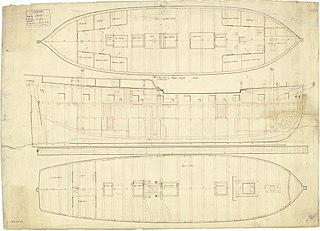
HMS Rattler was a 16-gun sloop of the Royal Navy. Launched in March 1783, she saw service in the Leeward Islands and Nova Scotia before being paid off in 1792 and sold to whaling company Samuel Enderby & Sons. She made two voyages as a whaler and two as a slave ship before she was condemned in the Americas as unseaworthy in 1802. She returned to service though, sailing as a whaler in the northern whale fishery, sailing out of Leith. She continued whaling until ice crushed her in June 1830.
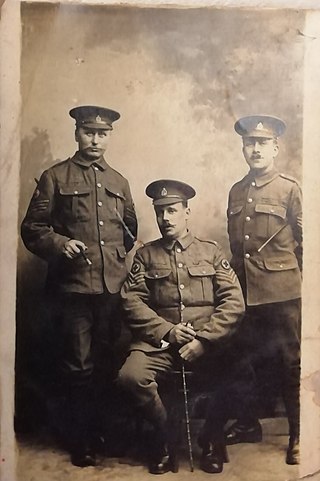
City of Edinburgh may refer to a number of ships, all named after the city of Edinburgh, Scotland:

HMS Indian was a Bermuda-built sloop launched in 1805. She captured several small privateers while on the West Indies and Halifax stations before the Royal Navy sold her in 1817. Her main claim to fame, however, is that she was the first command of future Rear-Admiral Charles Austen, who was also the brother of the famed novelist Jane Austen. After the Navy sold her she became a whaler for Samuel Enderby & Sons. She apparently sailed for them until the mid-1830s; she then sailed for other owners until mid-1847, for a total of nine whaling voyages since leaving naval service.
HMS Nimrod was a brig-sloop of the British Royal Navy, launched in 1812. She spent her war years in North American waters where she captured one small privateer, assisted in the capture of another, and captured or destroyed some 50 American vessels. After the war she captured smugglers and assisted the civil authorities in maintaining order in Tyne. She was wrecked in 1827 and so damaged that the Navy decided she was not worth repairing. A private ship-owner purchased Nimrod and repaired her. She then went on to spend some 20 years trading between Britain and Charleston, the Mediterranean, Australia, and India. She was last listed in 1851.

HMS Alderney was a 10-gun Alderney-class sloop of the Royal Navy that saw active service during the Seven Years' War and the American Revolutionary War. Launched in 1757, she was principally deployed in the North Sea to protect British fishing fleets and merchant trade. In this capacity she captured two American privateers, Hawk in 1779 and the 12-gun Lady Washington in 1780. She was removed from Navy service at the conclusion of the American Revolutionary War, and sold into private hands at Deptford Dockyard on 1 May 1783. She became the whaler Alderney that operated between 1784 and 1797, when the Spaniards captured her off Chile.
HMS Coquette was launched in 1807 and spent her naval career patrolling in the Channel and escorting convoys. In 1813 she engaged an American privateer in a notable but inconclusive single-ship action. The Navy put Coquette in ordinary in 1814 and sold her in 1817. She became a whaler and made five whaling voyages to the British southern whale fishery before she was lost in 1835 on her sixth.
Norfolk was built in France in 1784 under a different name. The British captured her c. 1800 and she made some voyages as a West Indiaman. She also made a cruise as a privateer. Between 1803 and 1808 she served the Royal Navy as an armed defense and hired armed ship on the Leith Station. She spent her time escorting convoys in the North Sea and captured one French privateer. After her naval service, between 1808 and 1814 Norfolk was a London-based transport. From 1814 to 1820 she made four voyages as a whaler in the British southern whale fishery. She was last listed in 1823.
The SY Hildegarde and the SY Hiawatha were steam yachts chartered by the Ministry of Agriculture, Fisheries and Food - Directorate of Fisheries, now known as the Centre for Environment, Fisheries and Aquaculture Science (Cefas) between 1912 and 1914 to carry out fishery investigations.
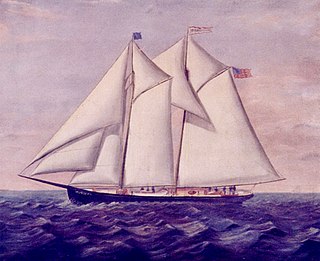
The Thomas F. Bayard was a 19th-century Delaware River pilot schooner built by C. & R. Poillon shipyard in 1880. She spent sixteen years as a pilot boat before being sold during the Yukon Gold Rush in 1897. She was sold again in 1906 for Seal hunting, then purchased by the Department of Marine & Fisheries where she guided freighters into New Westminster, British Columbia for 43 years. She was then acquired by the Vancouver Maritime Museum in 1978. When she sank at her mooring in 2002, the International Yacht Restoration School, Mystic Seaport and the Vancouver Maritime Museum, removed the vessel in pieces for the archeological teams to study and document the remains of her hull. The Thomas F. Bayard Collection, at the Vancouver Maritime Museum, contains the documents, history and preservation efforts.